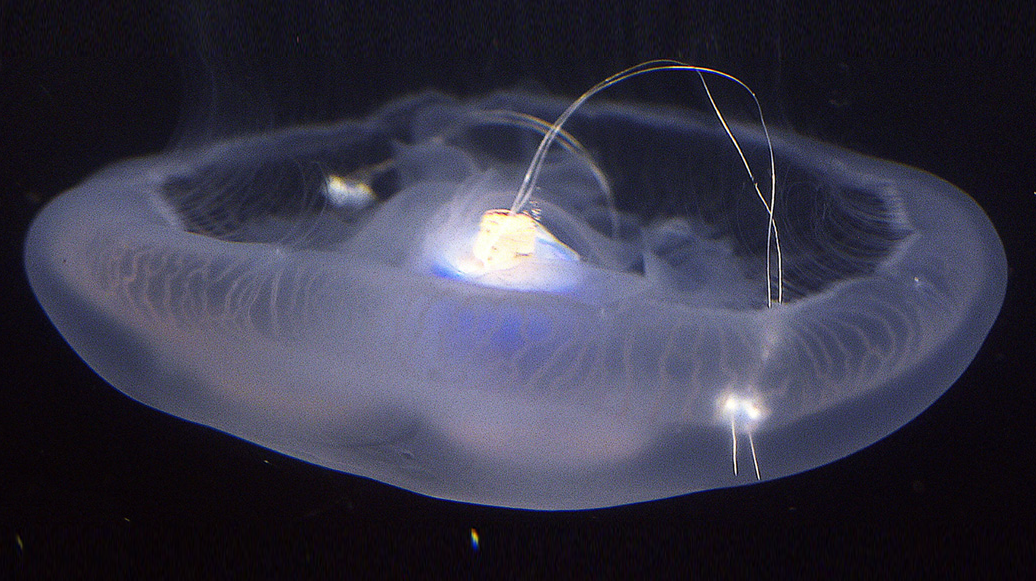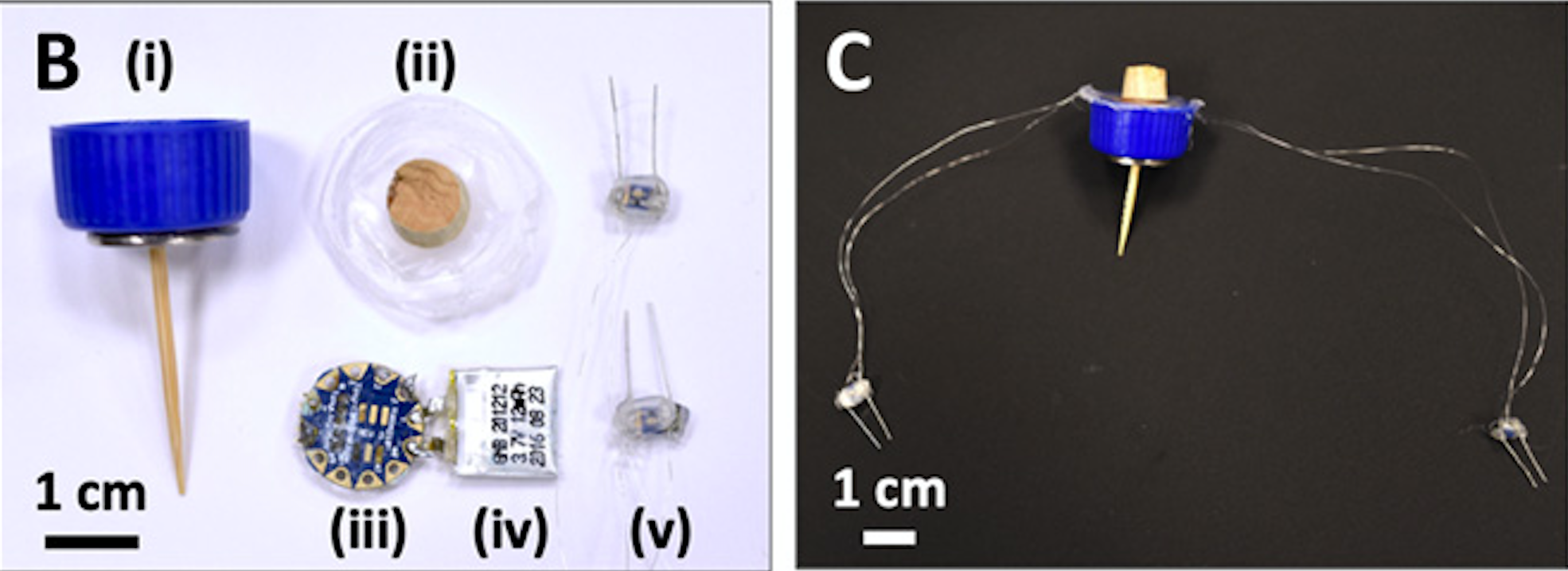Scientists Turned A Normal Jellyfish Into A Speedy Cyborg Jellyfish
by Ryan F. Mandelbaum
Jellyfish are the most efficient swimmers in the ocean, albeit fairly slow ones. Researchers at Stanford University made a jellyfish swim three times faster by sticking a motor to it, creating a biohybrid robot with the jellyfish as the “scaffold.”
The swimming cyborg was 10 to 1,000 times more energy efficient than other swimming robots, according to the paper published in Science Advances. The two researchers behind the study, Stanford graduate student Nicole Wu and professor John Dabiri, hope their robot could be used for ocean monitoring or taking underwater samples.
The researchers obtained dinner-plate sized moon jellies from the Cabrillo Marine Aquarium in San Pedro, California and moved them to a large artificial saltwater tank. They designed a weighted waterproofed controller with a lithium polymer battery, microprocessor, and set of electrodes, which they embedded into the jellyfish’s muscle tissue—kind of like a pacemaker for a heart, but in this case, what looks like a bottle cap filled with electronics stabbed into the jellyfish with a toothpick to make it move faster. The controller generated electrical waveforms and injected them into the jelly muscles.
The researchers, anticipating ethical objections to this work, noted that moon jellies “are invertebrate animals with no central nervous system or reported nociceptors. However, we took steps to ensure that no unnecessary tissue damage occurred during experiments.”

Three experimental trials followed: one to just observe jellyfish swimming on their own without a controller attached; one with the controller turned off to see how it affected the jellies’ motion; and one where the controllers provided electrical stimulation. The addition of the controller without stimulation seemed not to have much of an effect on the jellies. But for the smallest of the six test subjects, at pulse frequencies of 0.6 Hz (one pulse per 1.67 seconds), its speed increased by nearly three times, from around 0.15 to around 0.45 body diameters per second.
Why don’t jellies swim this fast on their own? The authors speculated that there’s no evolutionary pressure for moon jellies to go this fast.
The authors write that they hope to improve the controllability of biohybrid robots, including inputting uneven signals to change the shape of the jellyfish’s bell to control turning. They hope to further increase the energy efficiency as well.
As for the jellies’ ultimate fate, the authors wrote that they healed on their own once the electrodes were removed.